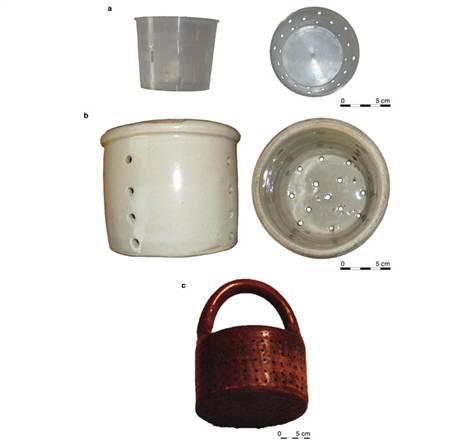Archaeologists Discover Ancient Cheese With Mummies In China
This article is more than 2 years old
 If I had to pick, I would say that cheese is my favorite food. I don’t want to get more specific than that — I love all kinds. Salty feta, creamy brie, stinky camembert, melty mozzarella — it’s all delicious, and with wine and olives, cheese rounds out my holy culinary triumvirate. But beyond its taste, cheese has some pretty amazing abilities, not the least of which is longevity. In fact, some seriously ancient cheese was recently unearthed in Chinese tombs.
If I had to pick, I would say that cheese is my favorite food. I don’t want to get more specific than that — I love all kinds. Salty feta, creamy brie, stinky camembert, melty mozzarella — it’s all delicious, and with wine and olives, cheese rounds out my holy culinary triumvirate. But beyond its taste, cheese has some pretty amazing abilities, not the least of which is longevity. In fact, some seriously ancient cheese was recently unearthed in Chinese tombs.
Archaeologists examining mummies in China’s Taklamakan Desert found some weird yellow stuff with the bodies. If it were me, I wouldn’t go poking around in that stuff — ancient ooze isn’t really my thing. But the archaeologists have stronger stomachs and senses of curiosity than I do, so they investigated and wrote up their findings in the Journal of Archaeologist Science. They date the cheese back to China’s early Bronze Age and estimate that it’s 3,600 years old. They found cheese in 10 different tombs, usually near the mummies’ necks and chests, presumably as gifts or as something to snack on in the next life. Archaeologists identified the cheese as kefir cheese, a soft yogurty cheese similar to ricotta, made with yeast and bacteria that has recently garnered attention in natural health food circles for its beneficial probiotics. Well, we always knew the ancient Chinese were ahead of their time.
This sample is the oldest discovered cheese in the world, though scientists know that people made cheese long before that. Scientists found residue from milk fat on cheese-making equipment (pretty much glorified strainers) discovered in Poland and dating back 7,500 years. Similar milk residues have been discovered in Anatolia and Libya, dating back 7,000-8,000 years. Like kefir cheese, whatever cheeses people made back then were almost certainly soft, relying on straining to achieve density.

Scientists also believe that the Sahara desert may have been home to a dairy farm about 7,000 years ago, when herders not only milked their cattle, but turned the milk into yogurt, butter, and cheese.
Cheese-making might not seem exciting for those who don’t like to stuff their faces with it, but according to scientists at Germany’s Max Planck Institute of Molecular Cell Biology and Genetics, which conducted the analyses of the recently unearthed cheese, the finding “opens new perspectives in the analysis of ancient material,” which extends far beyond this delicacy. In fact, recent studies show that cheese can clean up spills and eradicate bacteria, which may not be appetizing, but certainly helps make a case for the importance of cheese and the staggering genius of the ancient cheesemakers.











